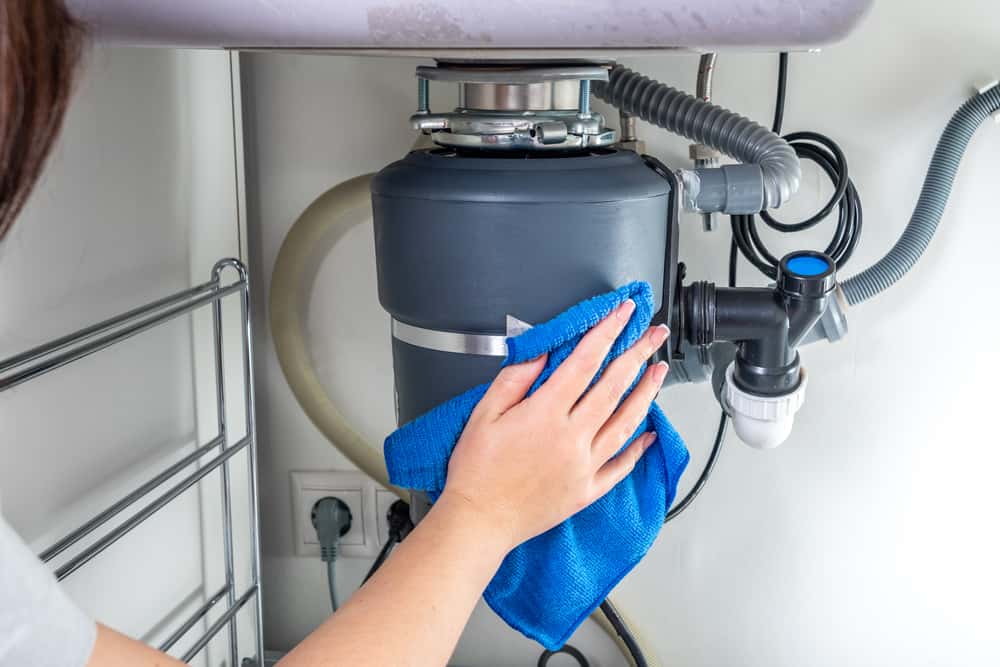Top Tips for Fixing a Leaking Waste Disposal Unit
Top Tips for Fixing a Leaking Waste Disposal Unit
Blog Article
The article down below on the subject of Why Is is fairly remarkable. You should take a peek.

Waste disposal unit are necessary cooking area home appliances that assist in taking care of food waste successfully. Nevertheless, a leaking waste disposal unit can be a discouraging and messy trouble to take care of. Luckily, many leakages can be taken care of easily with a couple of easy steps. In this write-up, we will discuss exactly how to fix a dripping waste disposal unit successfully.
Intro
Garbage disposals are installed under kitchen area sinks and are designed to shred food waste right into smaller pieces, permitting it to travel through the plumbing system easily. While these tools are normally dependable, leakages can happen over time as a result of damage, loose links, or damage to the unit.
Step-by-Step Overview to Repairing a Dripping Garbage Disposal
Switch off the Power
Before trying any fixings, guarantee that the power to the garbage disposal system is switched off to prevent the danger of electrical shock.
Locate the Leakage
Identify the precise area of the leakage and identify the reason
Tighten Connections
Utilize a wrench to tighten up any kind of loose connections in between the disposal device and the pipes system.
Replace Seals or Gaskets
If the leak is due to worn seals or gaskets, eliminate the old parts and change them with brand-new ones.
Patching Splits or Openings
For splits or openings in the disposal system, usage epoxy or an ideal patching product to seal the damaged area.
Determining the Source of the Leak
Before trying to repair a leaking waste disposal unit, it is essential to identify the resource of the leak. This can commonly be done via aesthetic evaluation or by conducting simple examinations.
Visual Assessment
Examine the garbage disposal unit meticulously for any type of signs of water leak. Pay very close attention to locations around seals, gaskets, and connection factors.
Checking for Leaks
One method to test for leakages is by running water with the disposal device and checking for any kind of visible indications of leakage.
Typical Sources Of Leaks in Rubbish Disposals
Worn Seals and Gaskets
Seals and gaskets play an essential duty in preventing water from leaking out of the waste disposal unit. In time, these elements can wear away, leading to leaks around the disposal system.
Loose Links
The links in between the waste disposal unit and the plumbing system can become loose in time, triggering water to leak out throughout procedure.
Fractures or Openings in the Disposal System
Physical damage to the garbage disposal, such as fractures or holes in the real estate, can also cause leaks.
Devices and Materials Needed for Repairing a Dripping Garbage Disposal
Prior to starting the fixing procedure, collect the required tools and products, consisting of a screwdriver, flexible wrench, plumbing technician's putty, replacement seals or gaskets, and epoxy or patching material for fixing cracks or holes.
Evaluating the Garbage Disposal After Fixing
As soon as the repair work is complete, examine the waste disposal unit by running water with it to ensure that the leakage has been resolved.
Preventive Upkeep Tips to Avoid Future Leakages
To avoid future leakages, it is necessary to execute regular upkeep on your garbage disposal. This consists of maintaining it clean, preventing placing non-food things or hard things down the disposal, and periodically checking for leakages or various other issues.
Final thought
In conclusion, taking care of a dripping waste disposal unit is a fairly uncomplicated procedure that can be finished with basic tools and materials. By following the actions laid out in this write-up and exercising preventative upkeep, you can maintain your garbage disposal in good working condition and stay clear of pricey fixings in the future.
What to Do About a Leaking Garbage Disposal
A leaking garbage disposal often goes unnoticed until you confront a sopping cabinet, a foul-smelling puddle, or an audible drip-drip-drip from the unit. The fix can be frustrating, too, because the leak can stem from a number of components in the system. Fortunately, with a little sleuthing, you can zero in on the leak and—depending on the exact location—stop the icky oozing and repair the component that caused it. Worst case scenario, if it turns out that the garbage disposal must be replaced, installing a new one is a reasonable do-it-yourself task for those with basic plumbing skills. Read on to keep the cash you’d otherwise hand over to a pro.
Prepare to find the leak
Prior to testing the garbage disposal for leaks, unplug it at the wall outlet and turn off the power from the breaker box to prevent electrical shock. Then insert a watertight sink stopper into your sink drain and wipe the unit dry with a clean cloth. In any handy container, mix a few drops of food coloring into a few cups of water, and pour the dyed water onto the sink stopper to help you locate the leak.
Investigate the source
the top, where the disposal meets the sink drain the side, where the dishwasher hose or main drain pipe connects to the disposal or the bottom of the unit Inspect each of these locations while gliding a light-colored rag over the unit; the dyed water will readily show on the rag and reveal the location of the leak. If a leak isn’t immediately apparent, remove the sink stopper and pour a few more cups of dyed water down the sink drain, then check for leaks again. Leaks near the top of the unit are more likely to show themselves while the sink is plugged, while side and bottom leaks are more noticeable while the sink is unplugged.
The metal sink flange that sits directly inside the sink drain is typically sealed around the top with plumber’s putty (a clay-like sealant) and then secured from under the sink with bolts. If the plumber’s putty deteriorates, or the bolts loosen, the flange can no longer form a watertight seal between the sink drain and the disposal—which could cause a leak at the top of the unit.
To reseal the leaky flange, you must first detach the garbage disposal. Start by loosening the screws securing the main drain pipe to the disposal, then loosen the screws in the metal clamp securing the dishwasher hose to the disposal and detach the drain pipe and dishwasher hose from the disposal. Loosen the screws in the mounting ring that connects the disposal to the metal mounting assembly beneath the sink, then pull down the disposal and carefully set it on a clean, dry surface. Loosen the bolts in the mounting assembly with a wrench, then pull down the mounting assembly and set it near the disposal.

I have been very enthusiastic about How to fix a pretty consistent leak from my garbage disposal and I'm hoping you liked our piece. Don't hesitate to take the time to distribute this entry if you enjoyed it. I enjoy reading our article about Why Is .
Call Today Report this page